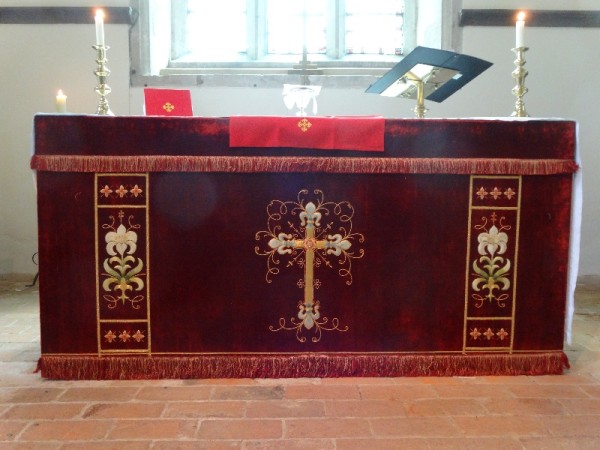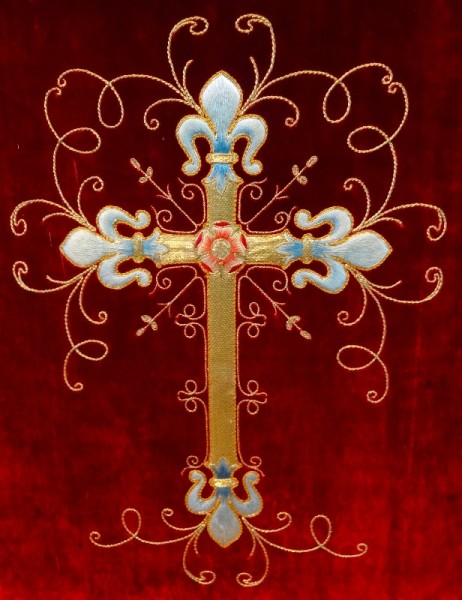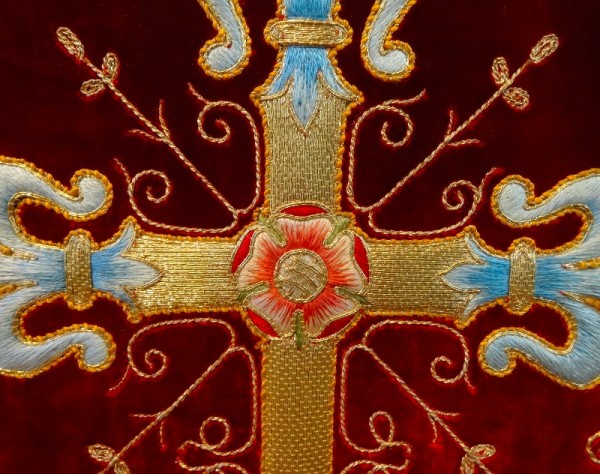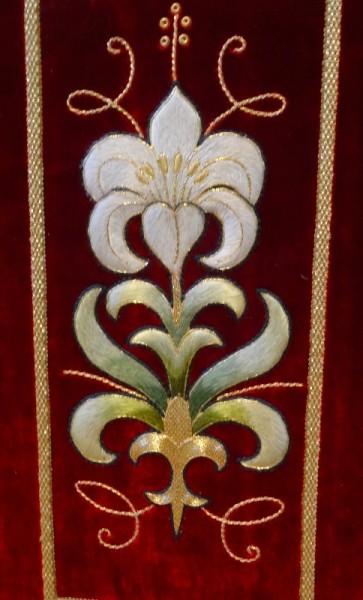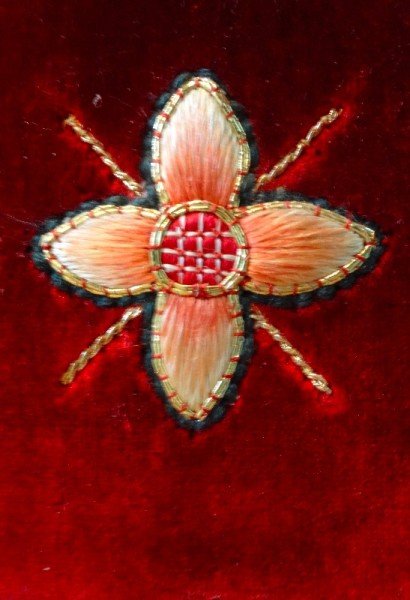I had come across a recipe for Chestnut Brownies in a magazine some weeks ago and the cutting sat in a pile of patchwork pieces getting more and more dog eared. Time to put it to the test. Casually I scanned the ingredients and made a visual note of the tin of chestnuts pictured. In town I picked up a similar looking tin and at home, having read the recipe properly for the first time, realised that what was required was in fact a tin of chestnut spread. I had a tin of peeled cooked whole chestnuts – the same brand in an almost identical tin, but very different contents.
Disappointed but not disheartened, I found this Dan Lepard chestnut brownie recipe instead (The Guardian 23 October 2010). I used Amaretto liquer instead of rum but otherwise followed it to the letter.
240g tin cooked chestnuts
200g brown sugar
25ml Amaretto liquer
2 tsp vanilla extract
2 medium eggs, separated
200g unsalted butter
200g dark chocolate, broken into small chunks
100g plain flour
Line a deep, 20cm square tin with nonstick baking paper. Chop the chestnuts, and in a bowl stir them with 100g sugar, Amaretto liqueur and vanilla.
In a clean bowl, beat the egg whites until they form soft white peaks, slowly beat in 100g sugar until you have a soft meringue, then beat in the egg yolks.
Melt the butter and chocolate in a bowl over a pan of simmering water, then remove from the heat and beat into the chestnuts and flour. Stir this into the meringue, then spoon into the prepared tin. Bake at 170C (150C fan-assisted)/335F/gas mark 3 for 20-25 minutes, until barely set in the middle, then leave to cool completely in the tin before cutting.
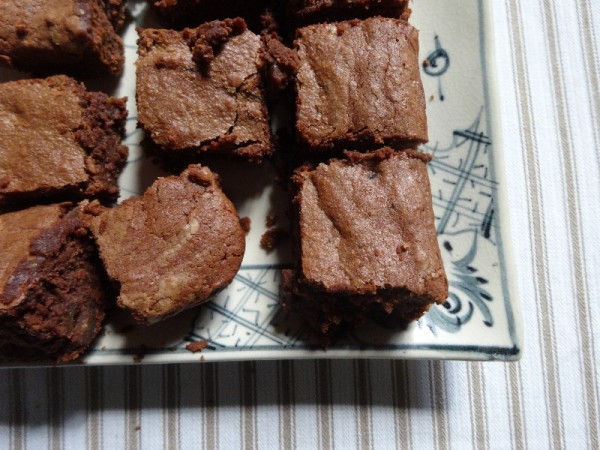
Chestnut Brownies (Dan Lepard’s recipe but using Amaretto liquer instead of rum); served on a Vietnamese pottery platter
These brownies had a lovely, rather truffly texture and smelt wonderfully chocolaty. During the second church service at the church by the Thames, I put the plate – by now half full of brownies – on an empty pew in front of me and my neighbour was almost carried away by the scent of chocolate. Would the plate even make it unmolested to the end of the service? In fact everybody seemed to like them – well several people liked them enough to ask for the recipe. However, for me the chestnuts didn’t hit the mark – a bit too soft for a nut and too hard for a fruit, they were also slightly bland and even soapy tasting for something so well soaked in a rather forward liqueur. The chocolate part of the brownie was, however, undeniably good and made me think that I should perhaps repeat this recipe with a real nut or a fruit like blueberries or raspberries. Given my thoughts about chestnuts, I’m now undecided whether to have a go at the original recipe that caught my eye.


